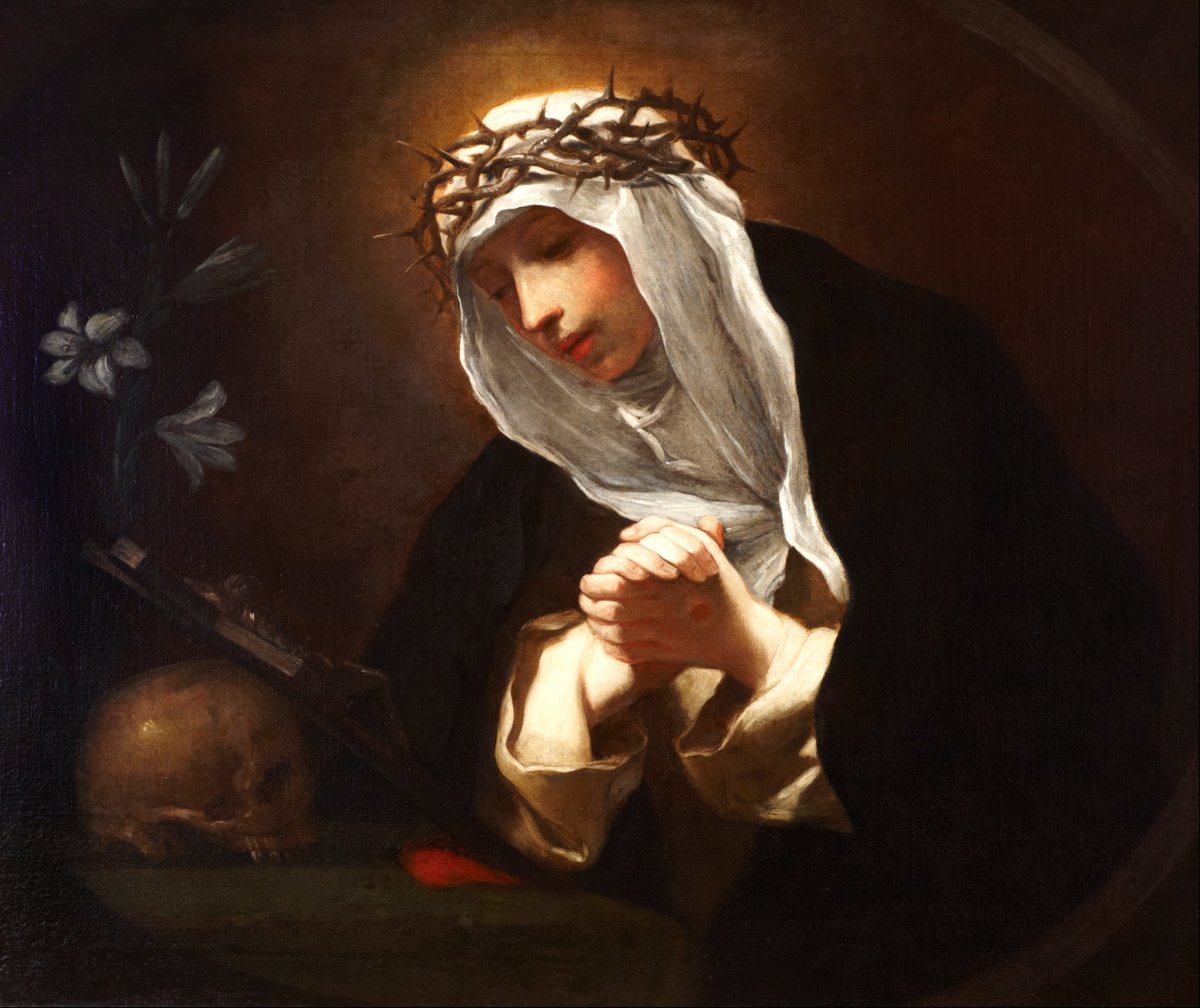Alright, let& #39;s go. St. Catherine of Siena thread:
Catherine was born on the feast of the Annunciation in 1347. She and her twin were the 23rd and 24th children to Giacomo and Lapa Benincasa. She had her first vision of Christ at age five or six. By age seven, she vowed to give herself entirely to Jesus.
When she finally told her family, who wished her to enter an arranged marriage, they were deeply upset. But Catherine was so set on her vocation that she fasted, cut her hair, and neglected her appearance to be less attractive to potential husbands.
Despite the pressures of her family, including threats from her brothers, Catherine remained steadfast. Her father finally relented, declaring that Catherine had chosen a better Spouse than they could ever hope to find her.
Catherine experienced a "Mystical Marriage" to our Lord, attended by our Lady and St. John the Evangelist and sealed by a ring of pearls visible to only her. Following this, she obeyed Jesus& #39; request to devote her life to works of mercy. She began in Siena’s hospital.
Catherine took on patients so wretched that no one else would serve them. When some patients scolded her and spread vicious rumors about her, Catherine served them all the more devotedly, cleaning their fetid sores and bringing them back to God through her example of humility.
When Catherine was drawn into political disputes, she began regular correspondence with nobility and politicians of 14th-century Christendom. Over 400 of her letters survive to this day. Her constant theme was that a good ruler must first be a good person.
“Politics are never anything but the product of a person’s religious life. Break the chains of sin; cleanse yourself by confession. Only then will you be real rulers. For who can really be master if he is not master of himself, if reason does not rule his passions?”
Since Catherine couldn& #39;t write, she had a band of secretaries to whom she dictated her letters. All of them would testify that the saint could dictate three letters at once on different topics and not lose the thread of any of the letters.
Once, all three secretaries, having themselves lost the thread of their respective letters, copied the same sentence. They all paused to ask for whom the sentence was intended...
“For all of you,” she answered, “and you will see when we complete the letters how our Lord has ordered the words of each toward his perfect plan.”
Her greatest political success was also a spiritual triumph—convincing Pope Gregory XI to return the papacy to Rome. For years the successor of Peter ruled not from there but from the opulence and luxury of distant Avignon, to the great political and moral decay of Rome.
Catherine, while forthright in her correspondence with Pope Gregory, never questioned his authority. On the contrary, she told him “Esto vir!” You are the man. Use your authority.
Her great spiritual contribution is her "Dialogue," dictated during a series of ecstasies. The theme is about the soul’s journey to salvation through ever deeper union with the sufferings of Christ, from which flows all of his mercy.
When Pope Paul VI declared her a Doctor of the Church in 1970, he described her theology as reflective of “the Angelic Doctor in a surprising degree...She exalted the redeeming power of the adorable blood of the Son of God, shed...for the salvation of all generations of mankind.”
She lived her final years in Rome, fasting so severely that by 1380 she could take no food or water at all. In her final eight days she was struck with a paralysis from the waist down. She died at 33 and was canonized within a century by Pope Pius II.
Catherine& #39;s body lies under the main altar in the Dominican church of Santa Maria Sopra Minerva in Rome. The site of an ancient temple to the goddess of wisdom is now transformed in Christ as the resting place of one of his wisest saints.
St. Catherine of Siena, pray for us!
St. Catherine of Siena, pray for us!

 Read on Twitter
Read on Twitter


